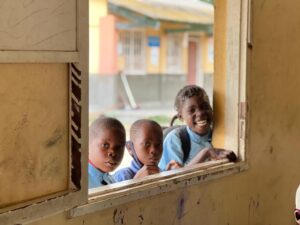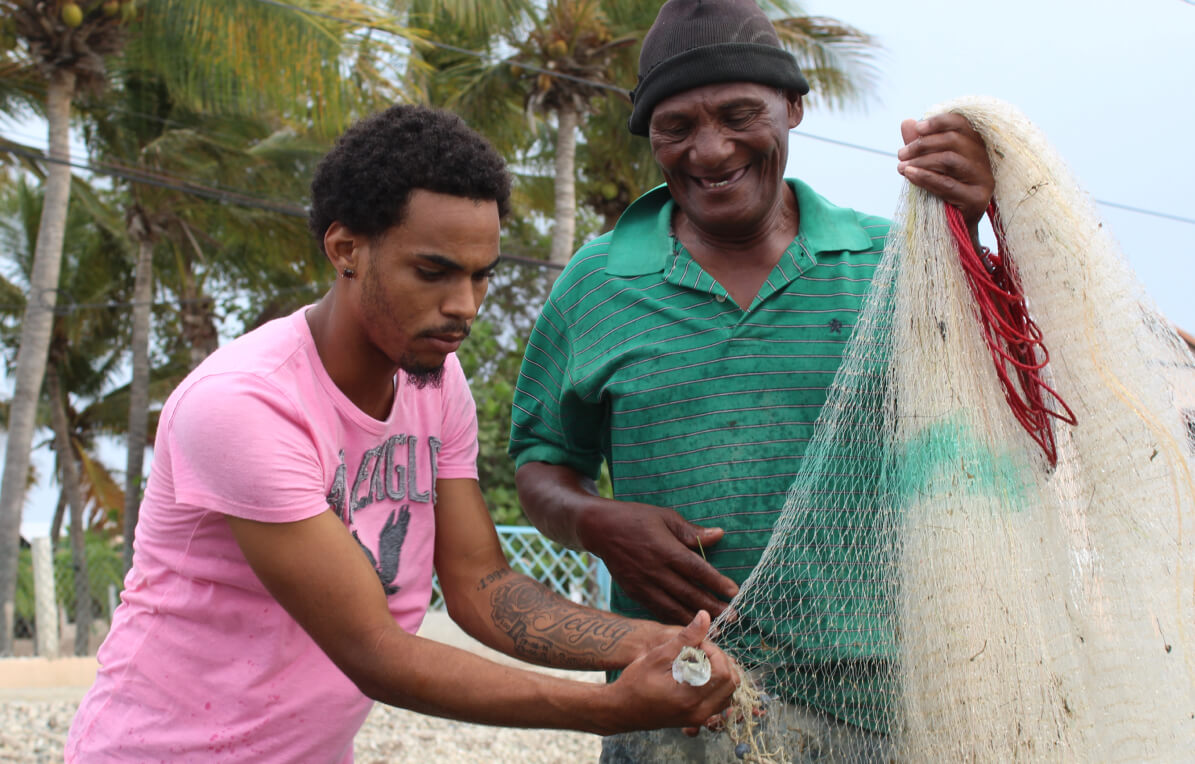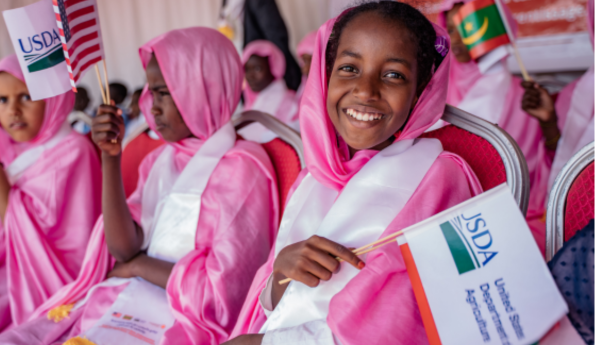The Matutuíne district in Mozambique, which borders South Africa, experiences high levels of migration throughout the year as Mozambicans search for income-generating activities. This is especially true in the summer months, South Africa’s peak tourist season. As a result, school attendance tends to drop off because parents and caregivers are not at home to make sure their children continue to attend school regularly.
Counterpart’s USDA-funded McGovern-Dole Food for Education and Child Nutrition program helps boost and retain school attendance by ensuring children have access to nutritious meals.
The program expanded the number of schools receiving school meals, based on the experience in Matutuíne, a pioneer in school feeding and the first district with 100% coverage of schools that met the minimum conditions to provide the meals (51 schools, 9,420 students).
The Return of Students to School
EPC Armando Emilio Guebuza primary school, located in the administrative post of Ponta D’ouro, is in the southern most part of Mozambique, just north of the South African border. It feels the pull of the neighboring country, as its students and their parents yearn for a better life. Led by Andre Paula Muianga since its opening in 2014, the school provides education to children from first to seventh grade.
“As a director, I was fortunate to start with a completely new school with a great space to implement new strategies,” Muianga said.
EPC Armando Emilio Guebuza was a recipient of school meals from the previous McGovern-Dole program, which helped attract a considerable number of students, especially in the early grades. When the program ended the consequences of its termination were evident. Students came back from a year shaken by COVID-19 at the beginning of the 2021 school year, but rapidly started to drop out because the incentive of meals was no longer available.
“It was disheartening to see the numbers of students steadily reduce overtime,”Muianga said.
When news came that the program would start again for the school in 2022, Muianga worked with the school council members to spread the word for parents to enroll their children in the coming school year.

The McGovern-Dole school meals program has seen success in drawing children back to school in the Matutuíne district.
At the beginning of the year, the school had enrolled 335 students, however, in the first month, absenteeism was high. When school feeding commenced at the end of the first trimester, the number of students jumped to 365 (a nine percent increase) as word of mouth spread of a new program of school feeding.
According to Muianga, “This is an immeasurable gain to bring students to school, when some would give up school to go to South Africa, where they often can enroll in schools with meals. The new menu is very good, as pupils enjoy the rice and yellow split peas more than they did the corn and soy blend of the past. I am confident that the results this year will make the teachers and parents proud.”
To learn more about the McGovern-Dole program in Mozambique, click here.






